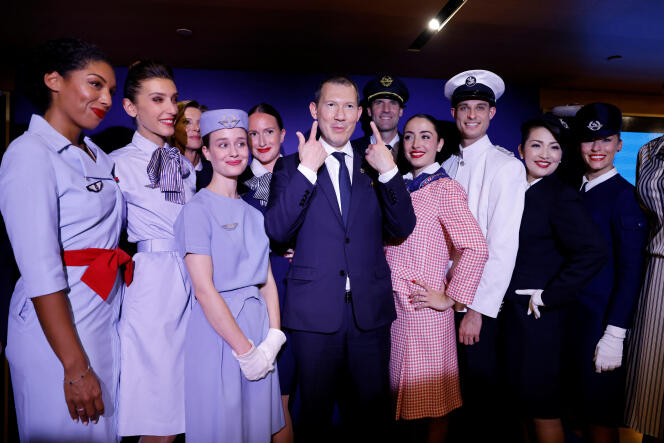


Ninety years after its birth, Air France seems to be in good shape. In any case, it is in much better shape than when it was founded on October 7, 1933, when then Aviation Minister Pierre Cot decided to merge four financially troubled airlines, in response to the 1929 economic crisis, to form what was to become Air France.
Today, even the unions agree. "Economically, the company is doing much better than in the last two or three years," said Laurent Dahyot, general secretary of the General Confederation of Labour (CGT) Air France (trade union). It will finish "in the green. 2023 is a good year," said Anne Rigail, chief executive officer and the first woman to head Air France. In the second quarter, the airline posted a positive operating income of €482 million. This was a return to better fortunes, reflecting "very strong demand on long-haul routes and particularly on the North Atlantic," said the CEO.
Baptized in 1933, Air France – and air transport in general – only took its present form after the Second World War. Like Renault, Air France became nationalized in 1948, focusing on long-haul flights. From the 1960s onwards, with its famous stewardess uniforms designed by Marc Bohan of Dior, Air France became part of the imagination of the French, who flocked to the terraces of Orly on Sundays to see its Caravelles and Boeing 707s take off.
The company had an easy start. In 1963, Air France faced competition from two rivals: UTA, which specialized in flights to Africa, Asia and the Pacific; and, in the same year, Air Inter, which focused on domestic destinations. First UTA, then Air Inter, eventually fell into its lap in the 1990s.
The launch of Concorde on January 21, 1976, symbolized this prosperous period for the national airline. On that day, Air France and British Airways each launched the supersonic aircraft. The former from Paris to Rio (Brazil), the latter from London to Bahrain. Commercial operation of the fuel-guzzling Concorde, which began just after the 1973 oil crisis, was always loss-making. It ended in 2003, three years after the Gonesse accident, which claimed 113 lives when the plane crashed into a hotel shortly after takeoff.
But this crash was yet another cloud in Air France's sky, which had been darkening for a long time already, as early as the beginning of the previous decade, when the takeover of UTA, purchased for the equivalent of over €1 billion in 1990, plunged the company into the throes of crisis. A year later, the economic situation deteriorated with the outbreak of the Gulf War. This marked the start of a vicious circle of mounting losses and successive cutbacks in the workforce. The debt peaked at over 37 billion francs (over €5.6 billion). Bernard Attali, Air France CEO since 1988, lost his position to Christian Blanc in October 1994. To save the company from bankruptcy, the latter cut 5,000 jobs and, above all, obtained government aid of 20 billion francs (€3.04 billion).
You have 59.64% of this article left to read. The rest is for subscribers only.
